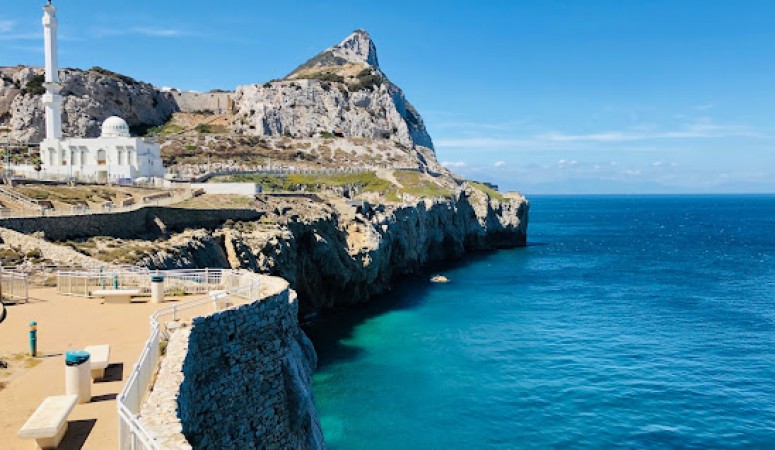
Perched at the southern tip of the Iberian Peninsula, Gibraltar is a tiny British Overseas Territory that packs a punch with its strategic location, historical significance, and unique blend of cultures. Known as "The Rock," Gibraltar's towering limestone cliffs and stunning vistas of the Mediterranean Sea have captivated travelers and military strategists alike for centuries, making it a symbol of strength and resilience. Gibraltar's strategic location at the gateway to the Mediterranean has made it a coveted territory throughout history. The Rock's significance can be traced back to ancient times when it was known as one of the Pillars of Hercules. Over the centuries, Gibraltar witnessed the rise and fall of empires, with its possession fiercely contested by various powers.
Gibraltar has been a British possession since 1704, following the War of the Spanish Succession. The Union Jack flies proudly over the territory, and British influence is evident in its governance, education system, and even the iconic red telephone booths that dot the landscape. The Gibraltar Museum provides a glimpse into the territory's rich history, from its geological formation to its role in historical conflicts. The imposing limestone Rock is the centerpiece of Gibraltar, rising majestically to a height of over 400 meters (1,300 feet). This natural fortress has been a symbol of strength and security for Gibraltar throughout history. Visitors can take a cable car or hike to the top, where breathtaking views of the surrounding coastline and the Strait of Gibraltar await.
Gibraltar's multicultural identity is a result of its unique history and location. The territory is a melting pot of cultures, with a mix of British, Spanish, and other Mediterranean influences. English and Spanish are the official languages, but Gibraltarians often speak a blend of the two, known as Llanito. The diverse heritage is also reflected in Gibraltar's cuisine, music, and festivals. Gibraltar's military history is marked by the Great Siege, a prolonged conflict in the late 18th century when the territory withstood a siege by French and Spanish forces for over three years. The Great Siege Tunnels, an extensive network of military fortifications and tunnels carved into the Rock, serve as a poignant reminder of Gibraltar's fortitude during this challenging period. Today, Gibraltar is a thriving economy with a strong financial services sector and a burgeoning tourism industry. The territory's low taxes and business-friendly policies have attracted international businesses, making it a hub for online gaming and finance. The lively Main Street, filled with shops and cafes, is a testament to Gibraltar's economic prosperity and vibrant atmosphere. Gibraltar's natural beauty extends beyond its impressive Rock. The territory is home to the Gibraltar Nature Reserve, a protected area that provides a sanctuary for diverse flora and fauna. The famous Barbary macaques, Europe's only wild monkeys, roam freely in the reserve, delighting visitors with their antics.
In conclusion, Gibraltar's historical significance, strategic location, and unique blend of cultures make it a fascinating destination at the crossroads of Europe and Africa. From its iconic Rock and military fortifications to its multicultural identity and thriving economy, Gibraltar stands as a symbol of history and resilience, inviting travelers to discover its rich heritage and stunning landscapes at the gateway to the Mediterranean.
Also read - Gold Coast, Queenland: Emerges as Top Tourist Destination
Malibu, California: A Coastal Gem of Endless Beauty and Celestial Appeal